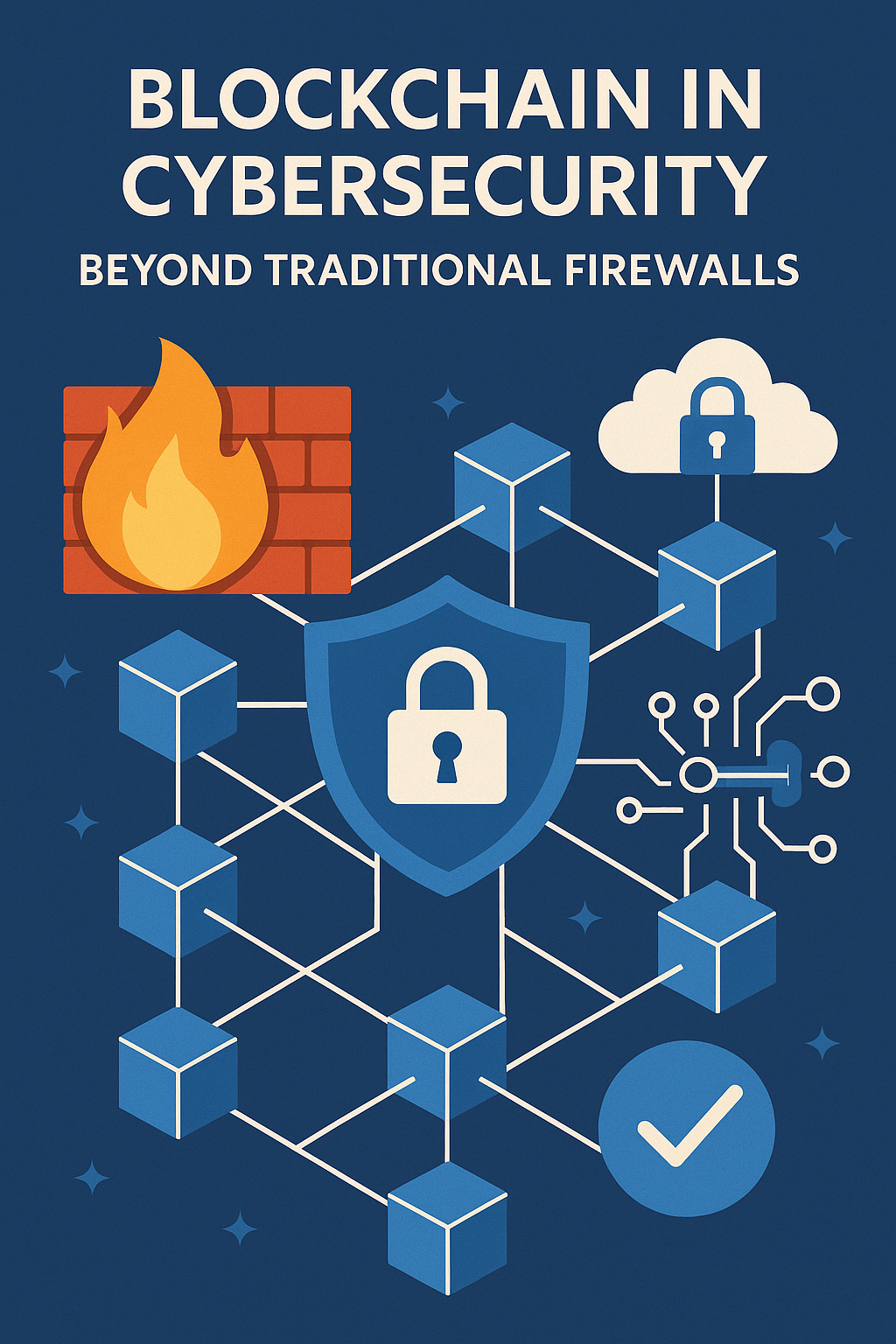In today’s digital-first world, cybersecurity has become a top priority for businesses, governments, and individuals. As cyberattacks grow increasingly sophisticated, traditional defenses such as firewalls, antivirus software, and intrusion detection systems are no longer sufficient. While these tools remain valuable, they often operate in centralized architectures that leave organizations vulnerable to breaches. Enter blockchain technology—a disruptive force poised to reshape cybersecurity beyond the limits of traditional firewalls.
The Cybersecurity Challenge
Cybercrime is escalating at an unprecedented pace. Ransomware attacks, phishing campaigns, data breaches, and insider threats continue to cost organizations billions of dollars annually. Traditional security frameworks typically depend on centralized servers, creating single points of failure. Hackers often exploit these weak links, gaining unauthorized access to sensitive data or disrupting services.
Moreover, as more devices connect through the Internet of Things (IoT) and enterprises shift to multi-cloud environments, the attack surface for hackers continues to expand. In this environment, cybersecurity solutions must evolve to provide decentralized, tamper-proof, and transparent protection mechanisms. This is where blockchain comes into play.
How Blockchain Reinforces Cybersecurity
Blockchain, originally built to support cryptocurrencies like Bitcoin, has grown into a versatile technology with far-reaching applications. At its core, blockchain is a distributed, immutable ledger where data is recorded across a network of nodes. This structure makes it exceptionally resilient against tampering and unauthorized access.
Here are some ways blockchain is revolutionizing cybersecurity beyond traditional firewalls:
1. Decentralization and Elimination of Single Points of Failure
In traditional systems, sensitive data is often stored in centralized databases, making them attractive targets for hackers. Blockchain distributes data across multiple nodes, ensuring that no single server controls all information. Even if one node is compromised, the rest of the network maintains integrity, thereby minimizing the impact of attacks.
2. Immutable Audit Trails
Blockchain records transactions or data changes in a permanent, time-stamped manner. Once information is added to the ledger, it cannot be altered without consensus from the network. This immutability creates transparent audit trails, which are invaluable in investigating security incidents and ensuring compliance with regulations like GDPR or HIPAA.
3. Enhanced Identity Management
Weak or stolen credentials are a leading cause of cyber breaches. Blockchain enables decentralized identity (DID) systems, where users control their digital identities using cryptographic keys. This reduces reliance on centralized identity providers, lowers the risk of identity theft, and empowers individuals to decide how their personal information is shared.
4. Smart Contracts for Automated Security Protocols
Smart contracts—self-executing agreements coded on a blockchain—can automate cybersecurity measures. For example, a smart contract could automatically revoke access to a compromised device or trigger security patches across a network without human intervention.
5. Protection for IoT Networks
With billions of IoT devices online, traditional firewalls often struggle to monitor and secure these endpoints effectively. Blockchain provides a decentralized framework to secure device-to-device communication. Each device can authenticate itself using blockchain protocols, significantly reducing the risk of spoofing or unauthorized access.
6. Resilient Data Encryption and Sharing
Blockchain-based systems use advanced cryptography to secure data. Sensitive information, such as medical records or financial transactions, can be encrypted and stored on a blockchain, ensuring that only authorized parties with the correct keys can access it. This is particularly powerful in industries where data sharing is essential yet highly regulated.
Real-World Applications of Blockchain in Cybersecurity
-
Financial Services
Banks and fintech companies are adopting blockchain for fraud detection and secure transactions. By verifying each transaction on a blockchain ledger, institutions can reduce fraudulent activities and provide transparent auditability. -
Healthcare
Patient data security is critical in healthcare. Blockchain enables secure sharing of medical records across hospitals, insurers, and patients, while maintaining strict privacy controls. Immutable logs also help track unauthorized access attempts. -
Supply Chain and Logistics
Blockchain helps track products across global supply chains, preventing counterfeit goods and ensuring authenticity. Cybersecurity risks such as data manipulation are mitigated through immutable ledgers. -
Government and Defense
Governments are exploring blockchain for securing voting systems, military communications, and sensitive citizen data. The decentralized nature of blockchain makes it harder for adversaries to alter or compromise critical information.
Benefits of Blockchain Over Traditional Firewalls
-
Stronger Data Integrity: Blockchain ensures data cannot be secretly altered.
-
Transparency: Every action is recorded and traceable.
-
Decentralized Trust: Removes reliance on a central authority.
-
Scalability for Modern Networks: Works effectively in multi-cloud and IoT ecosystems.
-
Reduced Human Error: Automated protocols minimize risks caused by human negligence.
Challenges and Limitations
Despite its promise, blockchain is not a silver bullet for cybersecurity. There are challenges that organizations must address:
-
Scalability Issues: Large-scale blockchain networks can be slow and resource-intensive.
-
Integration Complexity: Incorporating blockchain into existing IT infrastructure may require significant investment.
-
Regulatory Concerns: Clear global regulations around blockchain use in cybersecurity are still evolving.
-
Energy Consumption: Certain blockchain consensus mechanisms, like Proof of Work, are energy-intensive.
The Road Ahead
As cyber threats grow more advanced, organizations must adopt innovative tools to protect their digital assets. Blockchain offers a paradigm shift in cybersecurity, moving beyond reactive defenses like firewalls toward proactive, decentralized, and tamper-resistant systems.
While challenges remain, research into energy-efficient consensus mechanisms, interoperability solutions, and regulatory frameworks is paving the way for widespread adoption. In the near future, blockchain could serve as the backbone of secure digital ecosystems, protecting everything from personal identities to global financial systems.
Conclusion
Traditional firewalls have long served as the first line of defense in cybersecurity, but they are no longer enough in an era of decentralized networks, IoT devices, and sophisticated cyber threats. Blockchain’s features—decentralization, immutability, and cryptographic security—position it as a transformative technology that goes beyond traditional defenses.
As businesses and governments continue to explore blockchain-powered solutions, one thing is clear: the future of cybersecurity will not just rely on stronger walls but on smarter, decentralized, and immutable systems. Blockchain is not just complementing traditional security—it is revolutionizing it.

